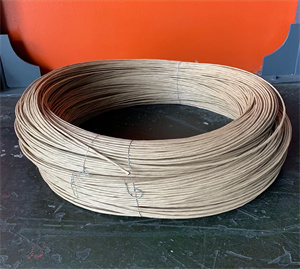Paper covered wire is a traditional electrical wire with a copper core wrapped in insulating paper. It is typically used in low voltage and low frequency electrical applications. The following is how to use paper wrapped wire:
Preparation: Before using paper-wrapped wire, make sure the work area is dry, clean, and has the proper tools and safety measures.
Measure and cut: Use a wire cutter or scissors to measure and cut the paper-wrapped wire to the desired length. Make sure the cut wire ends are flat and have no exposed copper core.
Strip a portion of the insulation: Using a wire stripping tool, carefully peel off a small section of insulation from the end of the paper-covered wire. Expose sufficient length of copper core to allow connection or insertion into a circuit.

Connector or terminal: Insert the exposed copper core of the
paper-covered wire into the connector or terminal as needed to ensure good contact. Depending on the connection, you may need to use a screwdriver, wrench, or crimp tool to secure the connection.
Insulation Protection: If you need to further protect the insulation of your paper-covered wire, you can use insulating tape or heat shrink tubing to cover the connections. Ensure insulation protection is complete and safe.
Installation and Wiring: Install paper wrapped wire in the appropriate location based on your specific application. Make sure the wiring layout meets safety standards and avoid damage or excessive bending of paper-covered wires.
Testing and verification: Before using a circuit with paper-coated wire, perform necessary testing and verification to ensure that the connection is solid, the electrical performance is normal, and it meets the expected operating requirements.
When using paper wrapped wire, please pay attention to the following points:
Paper covered wire is typically used in low voltage and low frequency applications, so make sure your application meets these requirements.
Pay attention to the maximum current and power carrying capabilities of paper covered wire to avoid overloading and damage.
Protect paper-covered wire from moisture or exposure to high temperatures, high humidity, or corrosive environments, which can damage insulation and cause electrical failure.
When paper-covered wires are exposed to the outside environment, regularly inspect and maintain them to ensure that the insulation is intact.
When handling paper-covered wire, be careful to avoid excessive bending, pulling, or damaging the insulation paper.
Please note that paper covered wire, as a traditional wire, may have been replaced in some applications by more modern insulation materials and wires. Therefore, in specific application scenarios, you may want to consider using a more suitable and advanced wire type.
